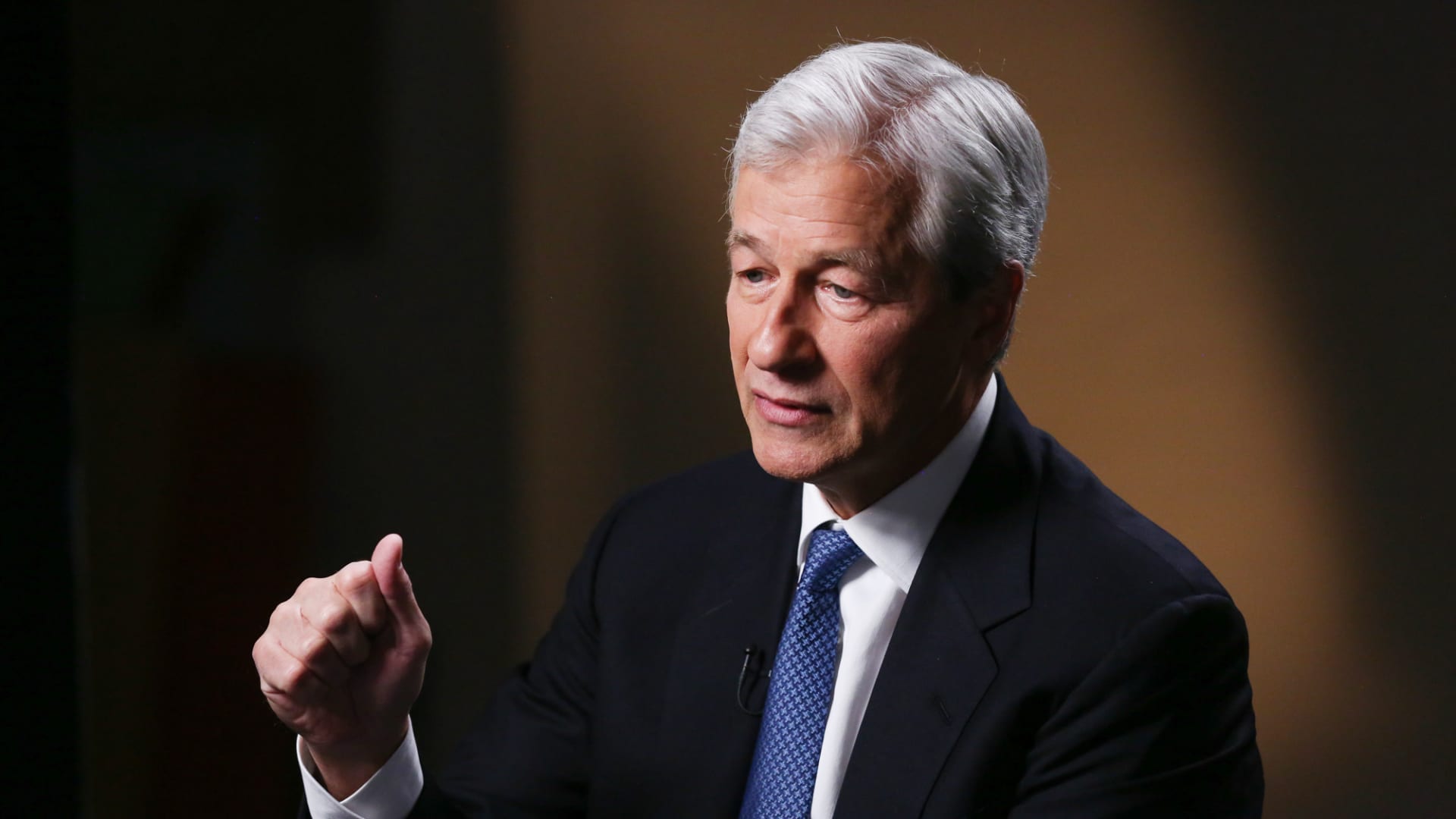JPMorgan Chase on Friday posted profit and revenue that topped Wall Street estimates as credit costs and trading revenue came in better than expected.
Here’s what the company reported compared with estimates from analysts surveyed by LSEG, formerly known as Refinitiv:
The bank said first-quarter profit rose 6% to $13.42 billion, or $4.44 per share, from a year earlier, boosted by its takeover of First Republic during the regional banking crisis last year. Per-share earnings would’ve been 19 cents higher excluding a $725 million boost to an FDIC fee covering costs from last year’s bank failures.
Revenue climbed 8% to $42.55 billion as the bank generated more interest income thanks to higher rates and larger loan balances.
But in guidance for 2024, the bank said it expected net interest income of around $90 billion, which is essentially unchanged from its previous forecast.
That appeared to disappoint investors, some of whom expected JPMorgan to raise its guidance by $2 billion to $3 billion for the year. Shares of JPMorgan fell more than 6% Friday.
While the NII guidance “strikes us as ultra-conservative (and now leaves room to be revised upward later on), we suspect the unchanged outlook will disappoint investors,” Piper Sandler analyst Scott Siefers said Friday in a note.
JPMorgan posted a $1.88 billion provision for credit losses in the quarter, far below the $2.7 billion expected by analysts. The provision was 17% smaller than a year ago, as the firm released some reserves for loan losses, rather than building them as it did a year earlier.
While trading revenue overall was down 5% from a year earlier, fixed income and equities results topped analysts’ expectations by more than $100 million each, coming in at $5.3 billion and $2.7 billion, respectively.
JPMorgan CEO Jamie Dimon called his company’s results “strong” across consumer and institutional areas, helped by a still-buoyant U.S. economy, though he struck a note of caution about the future.
“Many economic indicators continue to be favorable,” Dimon said. “However, looking ahead, we remain alert to a number of significant uncertain forces” including overseas conflict and inflationary pressures.
Though the biggest U.S. bank by assets has navigated the rate environment well since the Federal Reserve began raising rates two years ago, smaller peers have seen their profits squeezed.
The industry has been forced to pay up for deposits as customers shift cash into higher-yielding instruments, squeezing margins. Concern is also mounting over rising losses from commercial loans, especially on office buildings and multifamily dwellings, and higher defaults on credit cards.
When asked about commercial real estate during a media call Friday, CFO Jeremy Barnum said that while JPMorgan built its reserves last year for the asset class, he saw no signs of improvement.
“Especially in office, the story is well known, and as far as we can see, it’s not getting better,” Barnum said. “There’s no light at the end of the tunnel there from what we can see.”
Large banks are expected to outperform smaller ones, which tend to have larger exposures to commercial real estate, this quarter.
Wells Fargo and Citigroup also reported quarterly results Friday, while Goldman Sachs, Bank of America and Morgan Stanley report next week.






